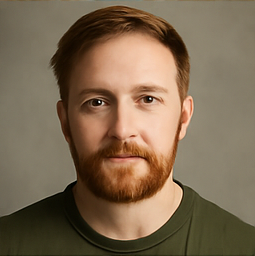Pope Leo XIV Inaugurated Amid Calls for Unity and Diversity in the Catholic Church

On Sunday, the world witnessed a historic moment as Leo XIV celebrated an outdoor Mass, marking his formal inauguration as the 267th pope of the Roman Catholic Church. In an address delivered to a vibrant crowd of over 100,000 faithful gathered in the iconic St. Peter’s Square, he emphasized the pressing need for a renewed unity within the church — one that acknowledges and embraces its diverse membership.
During his homily, Pope Leo sought to bridge the notable divides within the church, particularly between those who advocate for a more progressive approach that aligns with the modern world, much like his predecessor Pope Francis, and the more traditionalist factions leaning towards a restoration of longstanding church customs and practices. Leo articulated the cardinals' intent when electing a pope, stating they were in search of a “shepherd capable of preserving the rich heritage of the Christian faith while simultaneously looking to the future” — a future that demands addressing the myriad questions, concerns, and challenges facing society today.
The newly inaugurated pontiff, an American with Peruvian citizenship, expressed his humility in accepting the papacy. “I was chosen, without any merit of my own, and now, with fear and trembling, I come to you as a brother,” he remarked, calling for unity among all members of the church as one family.
A significant aspect of Leo’s inaugural day was his engagement with global leaders. He met with Ukrainian President Volodymyr Zelensky, discussing the ongoing quest for a “fair and lasting peace” in Ukraine, and extended his call for peace in Myanmar while urging the global community to remain mindful of those suffering from hunger and poverty.
Vice President JD Vance, who had a notably contentious meeting with Mr. Zelensky at the White House earlier this year, was also present during the Mass. The two leaders exchanged brief handshakes before the ceremony commenced, and later, Vance, who has been identified as “the first Catholic convert” to serve in his position, had a momentary handshake with Pope Leo as he greeted dignitaries and royals.
Despite discussions about a potential private audience with the pope before his return to the United States on Monday, details around this meeting remain uncertain.
The day was steeped in tradition and profound symbolism, marking the official commencement of Pope Leo XIV's ministry. After his election on May 8, Leo, formerly known as Cardinal Robert Prevost, took to the streets of St. Peter’s Square where the throngs of supporters chanted his name while capturing the moment with their smartphones.
Later, he descended into St. Peter’s Basilica, praying at what tradition holds to be the tomb of St. Peter. Emerging from the basilica’s steps, he celebrated the Mass, where he was presented with the fisherman’s ring, a significant symbol of his authority as pope. Overcome with emotion, he paused to reflect on the ring adorning his finger. He donned symbolic vestments that underscored his role as a shepherd to his flock, and participated in symbolic rites that signified his obedience to both lay Catholics and clerics.
In framing his mission, Pope Leo invoked Jesus’ role as a “fisher of humanity,” aiming to elevate souls from the depths of evil and despair. He reaffirmed the evangelizing mission of the church, stressing that it must never resort to coercion or force, but instead be rooted in love.
During the Mass, Cardinal Luis Antonio Gokim Tagle presented the pope with the fisherman’s ring, further solidifying the ceremonial weight of the occasion. Leo articulated the necessity for a pastor, akin to Peter — the very first pope — to remain close to his flock, eschewing the temptation towards authoritarian leadership.
He passionately spoke of the church's need to embody a “missionary spirit” that actively reaches out rather than retreating into exclusivity or superiority complexes. Emphasizing a “coexistence of diversity” within the framework of a united Church, he referenced Saint Augustine’s teachings, which resonate with many of the cardinals who have historically sought to mend the rifts that have developed within the church.
Supporters of Pope Francis expressed relief and optimism that Leo would maintain the welcoming legacy of his predecessor. Pope Leo, in his address, reiterated his commitment to fostering a “unity which does not cancel out differences but values the personal history of each person and the social and religious culture of every people.”
Beyond the church’s walls, Leo raised concerns about the pervasive discord and suffering present in the world, attributing many of these issues to hatred, violence, prejudice, and an economic system that exploits natural resources while further marginalizing the impoverished.
Marilyn Heller, a lawyer from Long Island, was visibly moved after the Mass, tears in her eyes as she reflected on the significance of having a pope from the United States. “A pope from the United States,” she said, “I feel like there is some new energy in the church.”
In conclusion, Leo XIV’s inaugural Mass not only marked the beginning of his papacy but also set the tone for a potential new chapter in the Catholic Church, emphasizing unity, understanding, and a mission rooted in love and peace.










